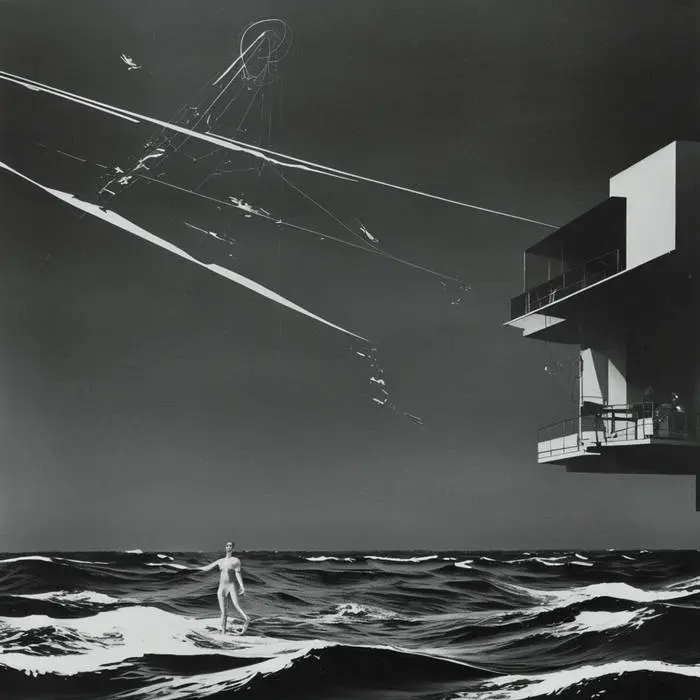If you search YouTube for V60 brewing videos and guides you’ll find about three billion different ones. Some with agitation, some without; pouring fast, in the middle, making circles; 40-60 or 30-70 or whatnot.
I always think to myself that they’re mostly just fluff.
It all depends on grind size and temperature. Doesn’t matter how you pour (well, within limits I would think) as long as you get your temps and grind right for the pouring technique you’ve chosen.
Admittedly, I haven’t tried a ton of different ones, maybe three or four. But this is the feeling what I’ve got.
Maybe there are some edge cases, like Ethiopian coffees being more prone to clogging the filter so less agitation might be a good idea.
I am a simple man, i put coffee in the filter and i pour water into it.
I was too and then someone gave me a French press, now I’m a sophisticant 🧐
M’Latte
I mean clean/heat container add coffee and water, let soak(brew?) ~3min then press and pour? Is that fancy? I have found that different coffees would need different times at which the brew would become too bitter or too weak but that is largely coffee dependent since my water is the same temp for all. I like trying different coffees so rarely have the desire to figure out the specifics to French press each one.
I was lying, I’m still a cave man. Hot bean juice taste good.
French press is great! Try sometime to let it soak for longer time, like 10min and don’t push the plunger down but slowly pour through it using it as a sieve. You’ll get quite a bit cleaner cup!
I’ll give that a shot!
Not of member of the larger coffee community, so exposure to this thread has me taken aback. I had no idea there were such nuances to preparing a cup of coffee. I do hope you’re able to figure it out.
EDIT: I should clarify, I’m not being an ass.
you can optimize literally anything
Reminds me of this https://www.youtube.com/watch?v=4ZK8Z8hulFg
I think most of the stuff online about coffee is fluff. It’s just one of those things people get really into. Like craft beer.
I’ve been in so many niche rabbit hole hobbies it’s embarrassing. Most of all of them is fluff. I’m each, there are a couple or three really important factors, a couple extra differences that come down to personal preference, and then a whole bunch of shit which are purely person preference that people imagine make a difference but really don’t.
In beer, you start to leave the realm of “makes a statistically measurable difference” when you start talking about serving glass shapes.
In wine, heck… whatever for into a more than $60 bottle, and glass shapes are in that realm too. The wine bottle can be made from thicker glass; the label made of quality paper with art designed by an artist of some repute - it makes it all feel more luxurious, but it has no effect on the taste of the wine.
Shaving starts getting silly with lather technique. Shaving is maybe the best example of this; you can get a perfectly good shave with the cheapest disposable razor and some dime-store shaving foam. A bunch of factors can make the shave more comfortable, Eco-friendly, or cheaper, but then most of it is just fluff.
Coffee, we have tamping and pour technique.
The gun community - heck, people still argue about 9mm vs .45 and the value of run & gun for civilians. George Zimmerman murdered Trayvon Martin and I guarantee the it didn’t matter if it was 9mm or .45 APC, and whatever draw technique he used had no effect on that outcome, or the fact that Zimmerman is still wandering around free, in Texas somewhere.
Linux distributions, and OSes in general, are no different: there are some key differences that matter, some more that affect the personal experience, and then a whole bunch of crap that really doesn’t affect the end result.
It’s the fluff that makes it a hobby; it’s the fluff that puts ritual into it, and makes it more enjoyable for the hobbyist. Fluff is great - it’s when we start imagining the fluff makes a quantifiable difference in the outcome and start proselytizing and arguing about which is better that it becomes absurd.
Come to think of it, religion is the same way. Each has a few main differences, but the holy wars are mostly fought over the fluff.
Keyboards is no beter. Like you said, the fluff makes the hobby.
All I know is I have yet to get a consistent cup of coffee. Thought moving from ground to whole bean would help, then from drip to pour over. From manual grinder to electric. With all other variables the same, I still have not been able to make a consistent cup. Getting rid of fines has made the biggest impact on consistency, how I have poured, in my opinion, has made the least.
It’s easier to be more consistent with a immersion brewing method compared to percolation. The only variable in immersion brewing would be grind size and water temperature.
This has been my experience. I use the hario switch and a had grinder. I’m able to make pretty consistent coffee from day to day. Dead simple to use as well.
I use Hario switch too but manually brewing like a V60, so I keep the flow off during blooming (add like 2x of grind weight in water and wait for 30secish) and then do two pours, about half and half of my entire batch.
How do you get rid of fines?
For now I’m slow loading my grinder. It’s tedious and takes 4 minutes, but I have very little fines as a result. Need to find a solution other than a sifter, don’t want to lose coffee.
Upgrading grinder can definitely help with fines, and btw manual grinders usually give you way value for your money. Also some coffees do make more fines than other ones, like I mentioned in the post that Ethiopian coffee tends to make more fines.
The only thing I’ve found that makes much difference is pre-wetting filters. The rest feels awfully like tarot and crystals for people that like caffeine.
This is a good one and I think blooming does help too in general but that also depends on when the coffee was roasted.
I do believe blooming is good, the first pour should be gentle and get the grounds wet, and the second pour should be from higher up, to agitate the grounds. There are probably other ways to get the same results. People tend to mess around with whatever techniques they can, do something that makes a better cup, and settle on that as the way to do it. There’s more than one good way.
My go to coffee is Vietnamese coffee and if you don’t bloom the grounds in the phin before filling it the coffee comes out watery and weak. I’m not even that particular about my coffee either, but blooming makes a massive difference in how coffee tastes.
I bought a “pour over” coffee maker for busy mornings and I love it. It even has a bloom feature that pauses the pour a bit before resuming. I was skeptical, but I did need a new machine, and it makes a better coffee than any other automated method I’ve had.
Yes I agree with blooming, though it depends quite a bit on when the coffee was roasted. Old coffee? Eh probably doesn’t matter (though I do it anyway).
Disagree based on my chemex experience with large brews at least (4-6cup). I thought it was fluff too and just kinda winged it but kept getting weak sauce brews. I’m now timing my pours precisely and it’s forcing me to have higher water volumes in the cone which is improving my extraction vs what I was drifting towards which was a pour and let soak through method. I’ve seen people say you have to even do it counterclockwise😂, so clearly some of the technique stuff is over the top, but timing is key at least for bigger brews.
Not a difficult thing to perform controlled tests on.
edit: Downvote if you like, but I’m not kidding. Keep water temp, grind, bean type/quantity etc all controlled, vary the pour method between trials. Taste. Do the cups taste the same?
Not hard.
It’s 2024 bruh, this pro-science bullshit isn’t cool anymore. Just tell me how my favorite celeb does it and I’m good dawg.
Point being that yes, if you keep everything else the same the pouring technique does make a difference. But if you take each technique and optimize grind size and temperature for that technique you will get the same result.
That does not make sense. Temperature and grind size cannot replicate the effect of gravitational sorting, where smaller objects settle beneath larger ones after agitating. It’s why crumbs are at the bottom of a bag of potato chips and not mixed throughout.
Did you just make that up?
Smaller bits of coffee settle from the suspension more slowly, though, so fines are on top
Good point. They do stick to the filter more though.
Sure, not arguing that. I am arguing that unless you get lots of clogging due to the fines it doesn’t matter.
So, basically it doesn’t matter unless it matters? Got it.
What’s the 40-60 ratio?
It’s referring to a process called the 4:6 method invented by Tetsu Kasuya.
Basically that after blooming with small amounts of water you pour 40% of your entire brew size, wait, and pour the remaining 60%.
Some people say that the first pour determines how sweet the coffee is and yeah, I have a hard time believing it.
Probably seconds. 40 second bloom, pause, 60 second something else. Just a guess.
My coffee brewing journey has been long and varied over the last 25-30 years. From drip to French press; moka pots to aeropress; percolators to espresso machines.
The last segment was me experimenting with pouring techniques and coming to the conclusion that as long as I have decent beens and a decent grinder, the nuance of the details beyond that aren’t actually that important to me. I might be able to tell the difference between one pouring method versus another but not without having both cups side by side, and as I get older, I just don’t have the capacity to process that much caffeine anymore. And if I’m not planning to drink to cups at a time, what difference could it make?
I’ve settled on an automatic drip (Moccamaster) machine for its simplicity of setup and cleanup of a multi cup pot of coffee.
It’s basically just a lazy pour over anyway ¯\_(ツ)_/¯
I think there’s a lot of fluff for sure. I do think there is some real technique to it, though.
Pouring so that you keep a higher volume of water in the pourover will help to keep the temperature stable, which should help keep extraction up. The two extremes here would be if you dripped water through in like 20 additions, letting the bed settle each time vs. doing it all in one addition. The average temperature throughout would be higher in the latter case.
Bloom should also have an effect for freshly roasted coffee. If you dump a bunch of hot water on really fresh coffee, a decent amount of the grounds will just float on top of bubbles, insulated away from the actual water. It matters less and less as coffee ages/off gasses.
Agitation should also have an effect. Things dissolve better when agitated; that much is obvious. The only additional thing to consider is that no coffee grinder creates perfectly uniform grounds. One thing that any beer brewer can tell you is that the “filter” is not what actually filters a wort from the spent grains; the spent grains themselves form a filter to get rid of any fine particles. Similarly in coffee, a lot of the fines will actually get caught up on the larger particles, provided the larger particles are allowed to settle. If you keep the grounds agitated the whole time, the fines will get sucked into the filter paper itself. Some will probably make it through into the cup, which could affect taste and texture, while much will clog up the filter, slowing the whole brew down.
It ends up depending on how good your grinder is (and if your beans are especially prone to making fines), and what type of filter you use. If you theoretically had a perfect grinder and beans, maybe you’d want to keep the grounds agitated the whole time, but if you have a crappy grinder, maybe you want to have no agitation at all.
Personally, I have an okay grinder, and i always use fresh beans, so I try to bloom my grounds with maybe 20% of the water, and agitate as much as possible. Then I add basically as much water as my pourover will hold at once, and I’ll top it off gently as soon as room opens up.
Yes, good points. I really should’ve been more clear in the post that I do not mean that everything relating to technique is fluff and that nothing matters; blooming being one of the big ones. Merely that if you take a 10 common methods you find, you’ll get the same output after you optimize temps and grind.
i think you basically want some amount of agitation at some point relatively early in the process just to make sure all the grounds are getting wet. then you usually want less in the middle/late phases to avoid clogging as op mentioned, since the undisturbed bed slows/stops a percentage the fines from reaching the filter, and the reason you want to avoid clogging is that you cant get as good of a result if it winds up running too slow overall.
pouring technique can definitely have an effect on all this (e.g. pouring too hard in the middle to late phases with a shallow water level digs into the coffee bed and churns it up causing a lot of agitation).
Surface area leads to more extraction and agitation does the trick from my 3 years of physics 🤷♂️
Beyond that you’ll have to test if you don’t believe the current stuff out there.
Absolutely agree. The temperature of the water on each pour is really the only thing I’ve found that can change the flavor, aside from the beans and grind.
It’s all placebo effect. That James Hoffman guy is the worst. “In our taste tests…” Are your taste tests double blind? I highly doubt it.
“You gotta jiggle it three times after 36 seconds then add 13 drops of 210.3° water between the filter and the brewer. Equally spaced, of course.”
The worst part is the pseudoscientific rationalization about what each step does to the final product.
“This step balances the acidity and oxygenation.”
It’s hilariously ironic that the example you use is the one guy using actual science. The OG with a caffeine analyser, refractometer, particle size analyser and who will strap temperature and pressure probes to anything and everything to measure how they perform.
If you haven’t had the opportunity to try different coffees prepared different ways, then that’s unfortunate for you. If you have and you can’t taste the differences, maybe that’s on you? The only people I’ve ever met with so little ability to distinguish tastes were smokers.
Using some gadgets in a kitchen isn’t science. Science is a process through which you perform research in a way as to eliminate bias. Hoffman doesn’t do science. None of those things you listed determine how good the coffee will taste. And modifying any one of them might have no effect at all. The only way to know is by doing unbiased taste tests while controlling variables.
If you haven’t had the opportunity to try different coffees prepared different ways, then that’s unfortunate for you. If you have and you can’t taste the differences, maybe that’s on you? The only people I’ve ever met with so little ability to distinguish tastes were smokers.
What a shitload of stupid straw man arguments that don’t even deserve a reply. I said nothing about my personal ability to discerns flavor. I was commenting on pseudoscientific youtubers who don’t publish their taste testing methodology and are prone to bias. It’s well documented that when a person thinks something is special (including a preparation method) they rate it higher.
So anyway, do you find using three jiggles or four gives the optimal taste when using a plastic V60? I’m dying to know.
Using some gadgets in a kitchen isn’t science. Science is a process through which you perform research in a way as to eliminate bias. Hoffman doesn’t do science.
Yeah no shit. The point of those “gadgets” (infantilising the equipment doesn’t make it any less scientifically relevant) is to objectively measure whether changes in methodology are having an effect. That way you’re not relying on a person’s taste and inherent bias to tell you if it’s making a difference. How is that not science exactly? Honestly, do you even watch Hoffman’s content or did you just see a few tasting videos and conclude that it was all nonsense?
None of those things you listed determine how good the coffee will taste. And modifying any one of them might have no effect at all. The only way to know is by doing unbiased taste tests while controlling variables.
That’s right, none of the objective data can tell you how it tastes. A change to contact time might have increased extraction by 10%, but how do you know whether that actually tastes good? You have to either taste it yourself, or have someone else taste it and describe it to you. Which is what Hoffman does, with blind tastings, and often with the result of challenging his own preconceptions. I’m curious exactly how you propose to eliminate bias further than that?
So anyway, do you find using three jiggles or four gives the optimal taste when using a plastic V60? I’m dying to know.
Now who’s straw manning?
do you even watch Hoffman’s content
Of course not! I drink Folger’s Crystals. Why would I need his useless content?
Oh no, I guess we have to tell all the scientists in the world that if their processes and procedures don’t conform to your standards and make complete sense to you that they wasted all their education because they aren’t doing real science. Lol, the scientific method and process if done right will work to eliminate bias, but eliminating bias isn’t the sole purpose. The main purpose is getting good reliable results that are repeatable, even if the result disproves their original hypothesis.






